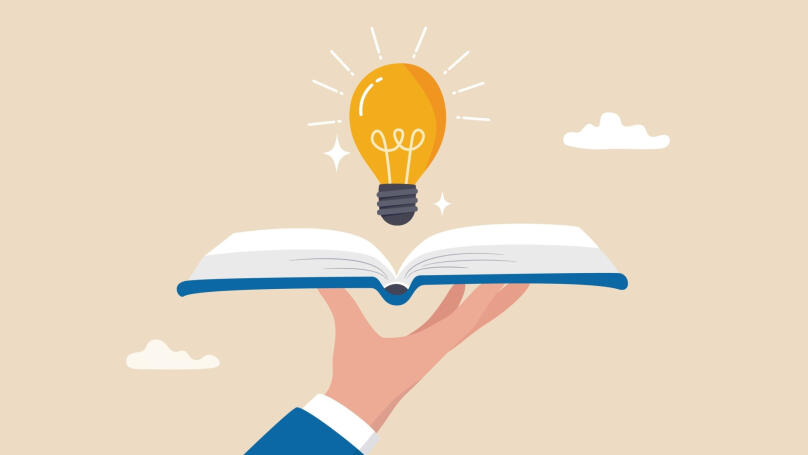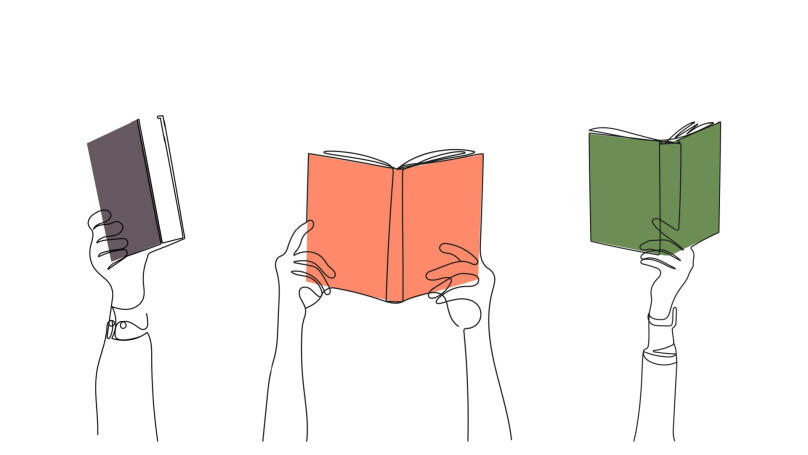Hands-on Learning

What is Hands-on Learning?
Hands-on learning is one of the innovative educational methodologies. Its key feature is its practical and result-orientated approach, i.e., acquiring new skills and their application in real-life contexts. A stricter definition states that "it is the learning process through the practical application of existing knowledge."
Even the name of the pedagogical approach - hands-on learning - speaks for itself: while training, children or students are involved in practical activities and, instead of learning theoretical material, work directly with their hands: create models of real objects, experiment, test various developments, and prove or disprove their hypotheses through experience. In other words, within the framework of this methodology, pupils learn by performing some tasks or solving a problem. It not only sparks interest in students and makes the educational process more exciting, but also contributes to better consolidation of new material, increased motivation, and labour productivity.
What Teaching Models Does Hands-on Learning Include?
Hands-on learning is primarily based on learning through the senses. That is, it is the multisensory approach to education. It assumes that in addition to the two main channels of information perception - visual and auditory - a person's cognitive process should involve tactile, and sometimes even gustatory and olfactory channels. Cognitive psychologist Richard Mayer proved the effectiveness of this approach. He investigated the impact of several sensory stimuli on learning. In his experiment, the scientist divided the participants into three groups, the first of which received information visually, the second - by ear, and the third by both channels. So, the study showed that the third group memorised and reproduced the information better than the first two groups.
Therefore, direct complex interaction with the environment and receiving feedback through one's senses contribute to faster learning and developing practical skills required in real life. It is what is called the ultimate goal of the hands-on learning system. Moreover, it aims to create an interactive and dynamic educational environment in which each child or student can learn individually, actively interact with other students, apply previously acquired theoretical knowledge and develop practical skills relevant to the present time.
Furthermore, the practice-orientated learning system includes another effective educational strategy - Kolb's experimental empirical model. According to this theory, two critical processes are happening during learning - the acquisition of experience and its transformation. Kolb described these phenomena in more detail in an experiential cycle consisting of four key stages:
- Gaining new experience through active action;
- Analysing the experience and generalising the skills that learners already possess;
- Theorising the knowledge or learning new material;
- Applying the acquired knowledge in practice or experimenting actively.
Although, learning is only effective if a person goes through all four states of the cycle.
How Hands-on Learning Works

It is essential in such learning to practice for training and achieving specific results. For example, in a particular science or subject, pupils, students and adult learners create projects in a specific area. For this purpose, they solve problems, look for various options for overcoming difficulties, conduct experiments, research, run surveys, and model particular objects. Therefore, the learner doesn't master the subject until they provide a concrete, visible and tangible result of their activity.
Within the framework of hands-on learning, the teacher acts as a helper who is always ready to support and assist students, give practical advice, theorise certain regularities, and, most importantly, lead by example on interacting with a particular object. It contributes to the development of initiative and independence in students and motivates them to self-develop and grow. Of course, it all happens under the professional guidance of the teacher, who nevertheless keeps a distance and allows students to act autonomously and independently.
Thus, hands-on learning differs from traditional teaching methods, which are primarily theory-based, in that students play an active and, indeed, primary role in their education.
The Benefits of Hands-on Learning
In addition to the above-mentioned details, innovative concepts such as hands-on learning allow learners to discover new opportunities, expand their boundaries and gain valuable experience. It contributes to developing many flexible skills, i.e. more universal knowledge and skills that are not related to a specific profession and are necessary for effectively communicating with people, organising one's time, dealing with conflicts constructively and making decisions. Moreover, the hands-on learning approach contributes to:
1. Increased engagement in learning
The hands-on approach to learning involves the active participation of children or students in all educational processes. For example, learners in the hands-on learning method regularly conduct experiments, make tests, model objects of the environment, and develop their inventions, in one way or another, comprehending the world and its laws through their experience. Thanks to this, even the most complex information is better learnt and remembered. Moreover, the high degree of learner involvement and, consequently, their active participation in learning activities contributes to the development of practical skills and the necessary flexible skills that help them to work effectively with others and resolve personal conflicts.
2. Improving social skills
Many hands-on activities involve teamwork, which means that students come together in small groups to work together to solve specific problems. The main goal of this strategy is to improve the learning experience by developing essential social skills, such as communication, collaboration and teamwork, empathy, adaptability, and constructive conflict resolution.
3. Developing critical thinking
The nature of hands-on learning encourages students to ask questions, investigate phenomena, make connections between them and thus develop critical thinking skills.
4. Increasing motivation and interest
Scientists at Massey University in New Zealand conducted a study. They found that an educational model based on acquiring practical experience dramatically increases student motivation, nurtures their interest in further learning, and develops their confidence in themselves and their abilities. Thus, students who adhere to the hands-on learning theory more easily overcome difficulties and obstacles arising in the process. Moreover, practical learning develops initiative in pupils and students and promotes personal growth, aspiration for self-improvement and self-discipline.
5. The ability to solve concrete problems in the real world
Hands-on learning activities often involve overcoming difficulties encountered in the environment. It requires students to think analytically, critically evaluate situations and find creative solutions. Therefore, hands-on learning helps students develop valuable skills in the learning process that will be applicable beyond the classroom.
6. Improving the overall effectiveness of education
When students can put their theoretical knowledge into practice and see how a process works, they learn better, remember new information faster and use it more effectively in real life. After all, new neural connections in the brain are formed and consolidated during direct interaction with the object of study. Thus, the results of implementing practice-orientated learning models have proved that it is possible to master theoretical knowledge fully only when applying it actively to solve real-life problems.
Thus, the educational process based on the hands-on learning theory brings much more tangible results than traditional learning models. However, it also has its drawbacks.
The Disadvantages of Hands-On Learning Concept

First, the implementation of hands-on learning is costly. It requires special equipment, additional materials, and tools because tests, physical experiments, and other procedures to disprove or confirm educational theories are carried out in a pre-prepared space with all the necessary devices.
Moreover, competent teaching using the hands-on learning method requires highly qualified specialists, so educational institutions should provide their staff with professional retraining or hire teachers with experience in teaching using the hands-on learning method. The knowledge assessment also causes additional difficulties, as it is more difficult to assess the possession of practical skills and abilities than theoretical knowledge. Thus, evaluation in hands-on learning settings involves a combination of methods and strategies to measure student performance. One such method is direct observation of learners. More common is the method of assessment based directly on performance. There are also separate methods of students' self-assessment and children or students' evaluation of each other, which implies receiving constructive feedback from equal participants in the learning process.
Don't think that the concept of hands-on learning is universal because it's not. After all, the hands-on approach to learning is not suitable for everyone. Moreover, not every discipline implies the practical application of the acquired knowledge. For example, the most effective use of hands-on learning is in STEM science training for adults, which is a model that combines science and engineering subjects. Nevertheless, education experts recommend embracing both hands-on learning and other learning styles, combining the benefits of each. Additionally, the more learning styles used in a lesson, the more likely students will learn new material.
Why is Hands-on Learning Important?
Hands-on learning is one of the least risky and safest ways to apply experientially acquired knowledge to real life. In other words, it allows students to make mistakes and learn from them.
Thus, if students are taught using hands-on learning methods from childhood, they get used to the fact that any activity consists of a series of trial and error, and it is customary to make mistakes. The main point is to recognise and correct errors and try not to repeat them. In this way, you can satisfy your curiosity, develop professionally and practise different skills in a natural environment without worrying that a mistake can have serious consequences. It helps children or students in their future lives, not only in academic education but also in their personal development, career advancement, and everyday interactions with people around them.
Additionally, unlike traditional approaches to education, a hands-on approach to learning encourages students to think outside the box, which arouses interest in actual research, experiments, and in-depth study of certain phenomena, processes, or social problems. Therefore, practical training actively involves and interests even the most aloof students in the lesson and allows them to realise the nature of the surrounding world and its objects through their own experience. By the way, this factor makes it possible to actively use hands-on learning for students with ADHD. Practical lessons improve concentration and diligence, allowing them to focus on one task for longer.
From the teacher's point of view, the hands-on learning approach also has significant advantages. For example, it allows you to break from the mechanical repetition of the same theoretical material, switching to its practical mastering, proving or disproving theories, hypotheses, and research.
These advantages of hands-on learning contribute to the fact that more and more teachers and world experts in the field of education recognise the importance of hands-on learning. Nowadays, hands-on learning is one of the most effective strategies for digesting new material and acquiring practical skills and abilities. We recommended using hands-on learning in schools, colleges, and universities, at professional development courses and retraining sessions for specialists with work experience. Moreover, when combined with other teaching styles, hands-on learning will bring even more significant benefits and allow you to master both practice and theory.
Examples of Hands-on Learning

Hands-on learning activities within a hands-on learning approach can include various interactive exercises, depending on the discipline and skills being learnt. For example, in mastering STEM sciences, conducting scientific experiments regularly, from the simplest to the most complex, is most appropriate to explain the universe's fundamental laws. Thus, you can visit physics, chemistry and other laboratories and use virtual and augmented reality capabilities. The Labster platform provides a safe environment for studying numerous technical disciplines, offering more than a hundred varieties of virtual laboratories and research centres. Students can conduct experiments on their own, learn the basics of science, explore the principles of atomic structures, animal genetics, fermentation, and so on.
In studying historical disciplines, it is possible to use historical reconstructions as hands-on learning and recreate those events that students can only learn about in theory. Such a technique will help "bring history to life" and better understand and digest the material. By the way, historical facts and scenes from works of art can be played out. For example, when studying world literature, theatrical dramatisations will allow students to put themselves in the place of the characters, understand their motivation and give a new meaning to a particular book.
Other artistic disciplines, such as fine arts, world culture or cultural studies, also involve creating specific creative projects. For example, educational institutions organise the so-called "World People's Day" every year, where students talk about different ethnic groups, dress in traditional costumes and perform folk songs and dances.
When studying the geography of a particular area, hands-on learning suggests constructing whole models of the objects under study, such as mountains, volcanoes, oceans and so on. It allows students to visualise and understand how landforms, geological formations and other parts of the Earth's surface get arranged.
In this way, every discipline studied - from cultural studies to rigorous maths - can be made more engaging and exciting through gamification. In addition to what has already been listed, gamification can be defined as creative strategy sessions, workshops, hackathons, and other forums with a competitive or game-like element. Their use increases students' engagement, motivation, and interest. It, in turn, enhances academic performance and creates opportunities for instant feedback, personalisation and practice-orientated learning.
Conclusion
Over the past few years, hands-on learning has become one of modern education's most popular and widespread trends. Today, this approach is an integral part of cognitive processes, requiring competent and gradual implementation because most disciplines, especially in middle and high school education, require theoretical and practical learning. So, for students of colleges, advanced training, or professional retraining courses using the hands-on learning approach is even more relevant. Indeed, upon completing education, each student will have work experience in their chosen field and refined practical skills and abilities.























